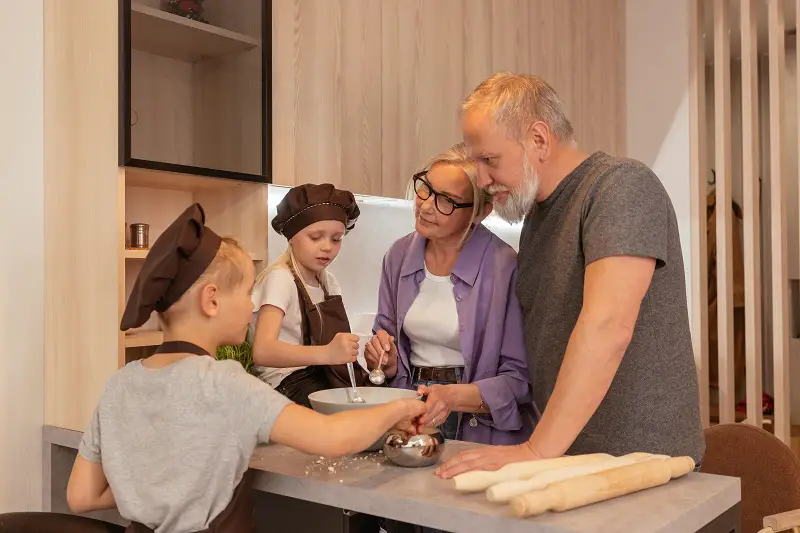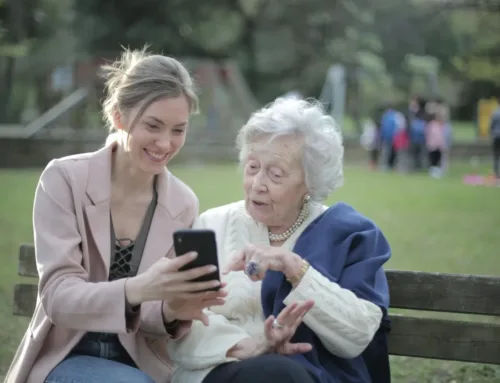What is hospice?

Hospice is end-of-life care that is specifically focused on relieving painful symptoms rather than curative treatment. In order to qualify for hospice care, one has to have been given 6 months or less to live by their doctor. This is necessary since a key component of hospice care is that all attempts to cure the underlying disease or condition have to stop under hospice care. The object of hospice care is to provide the dying person with as much comfort as possible so they can enjoy the last few months of their life. If you don’t have a 6-month life expectancy, but still want comfort-focused care, there are other options like palliative care you can look into.
When signing up for hospice care, you will be assigned a hospice team. Both inpatient and outpatient hospice care plans will employ hospice teams. The team will be made up of your doctors, nurses, a social worker, a religious counselor, an emotional counselor or licensed therapist, and any other volunteers and caregivers. Of course, the biggest supporters of the patient during this time is their family.
In an outpatient hospice care plan, the patient will stay in their own home or the home of a family member. Most of their general care will be given by the family, which is the primary caregiver in this situation. Their hospice team will be visiting constantly and keep in close contact with the family to guide them through this tough time. At least one of the nurses will visit daily to check up on the patient and provide daily needs like administering prescription medication, dressing wounds, physical therapy, or any other daily medical needs. The team will be constantly available to get into contact with in case of emergency, and in extreme cases, short-term inpatient hospitalization for symptoms is possible.
If the patient is unable to stay with family or loved ones, or if their condition requires a closer proximity to immediate medical attention, they will be placed in an inpatient hospice facility like a hospital or nursing home. In an inpatient hospice setting, the hospice team does more of the direct caretaking as the patient is alone. Without the family to be the primary caregiver, this is where many hospice caregivers step in. While a hospice caregiver can still help a patient and their family members in an outpatient setting, and many do, most are employed in an inpatient hospice facility.
What is palliative care?
Palliative care is an alternative to hospice care. There is no life expectancy requirement, as palliative care does not cease attempts to cure the underlying problem. There is still an emphasis on the comfort of the patient, and a palliative team will be assigned to do similar things that a hospice team does. Anybody with a serious illness or chronic condition can qualify for palliative care.
Just like hospice care, a doctor still has to sign off on palliative treatment before you can receive it, so if hospice or palliative care is something you are considering, bring it up with your doctor or specialist to find the best plan for you.
What are the roles of a hospice team?
The doctors and nurses on the hospice team are the ones providing medical care for the patient. Obviously, the doctor oversees all the medical procedures or prescription medications in the patient’s care plan. The nurses are the ones periodically visiting the patient to administer treatments and pain relief to them. The nurses will work closely with the family to make sure they understand on a medical level how they can help their loved one.
The therapists and spiritual counselors will provide emotional and spiritual support to both the patient and their family. The patient will be dealing with lots of emotions and spiritual concerns as they approach their death and it can be a terrifying time for them as they try to spiritually and emotionally navigate through the last few months of their mortality. It is also a very trying time on the family members of the patient, especially if they are taking care of them. It can be very stressful to take care of a sick family member, and then add the stress of knowing they only have a short time to live left on top of that and it can be debilitating. The emotional and spiritual counselors offer guidance and comfort not only to the patient but to the family as well. After the patient’s death, grief counseling is offered to the family members of the late patient.
The social worker will help handle the logistics of the care plan. They will keep in close contact with the patient and the family, updating them on their options and keeping them in connection with the hospital and their doctors. They will help set up any outside resources the patient or family needs.
In an outpatient hospice setting, it can get stressful for the family to be constantly caring for the patient. In order to help the family get some much-needed rest, as well as provide the patient with some extra medical attention, the hospice team offers respite care. Respite care allows the primary caregivers (in this case, the family) to take a break, either for just a few hours, to even a few days. Alternatively, if the patient requires serious medical attention, they can be admitted to a hospice facility for short-term inpatient care.
What does a hospice caregiver do?
A hospice caregiver is the unsung hero of the hospice care team. They are the ones helping both inpatient and outpatient hospice patients with their daily activities and care. Things like personal hygiene, getting dressed, transferring, using the toilet, and eating are examples of activities of daily living (ADLs). Other more advanced activities that hospice caregivers help with are managing finances, shopping for clothes, food, etc., making meals, cleaning and home maintenance, communication, taking medications, and other instrumental activities of daily living (IADLs).
Hospice caregivers often help their patients with personal hygiene, helping them to brush their teeth, use the bathroom, bathe and shower, get dressed, get in and out of bed, and help them prepare and eat their meals. They help keep their patients’ living space clean and tidy as it can be hard for the elderly or sick to clean up after themselves. They also usually do laundry and other washing for their patients. Mostly they are simply there to assist their patient in any way they can. Often helping them drive to and from places, and helping them shop and socialize. They will stay in the home to help make sure nothing bad happens to their patient while they would otherwise be alone where they could fall or hurt themselves.
Caregiving, especially in a professional case, can be hard work. There are several qualities a good caregiver needs to have in order to provide the physical and emotional support they need to help their client. They need to be reliable and on time. Acting as a hospice caregiver is a profession, and needs to be taken seriously. A caregiver should be professional, especially when dealing with the family and the patient’s doctors. They need to have good communication skills, as they will be interacting with the patient, their family, their doctors, and the hospice team, and need to understand everybody’s needs and how to best help the patient. They need to be sensitive to family matters and patient enough to work with difficult personalities. Many terminal illnesses can begin to affect personality, and lots of hospice patients will not be easy to work with all the time. Hospice caregivers need to be willing to work with difficult people, as well as be prepared to help the family deal with their loved one as well.
Caregivers also need to have a basic understanding of medical terms and prescription medications. They will be providing basic medical care to their patient, as well as helping communicate to the family and the patient what treatments are being given to them. It helps to understand what you are explaining. Most importantly, you need to have the physical and emotional capacity to be constantly helping someone. Assisting someone in their last few months of life is exhausting work, physically and emotionally. You need to be able to give them the physical and emotional support they need without burning out yourself. It’s a difficult job.
You can refer to this website for more information on how to become a caregiver.
When is the family the primary caregiver?
The family is usually the primary caregiver in a situation where the patient is living at home, with an outpatient hospice care plan. The family will be primarily responsible for the patient’s basic needs. The hospice team will be there often to provide medical help as well as support and guidance for the family on how to properly care for their loved one.
Should the family need extra support in taking care of their family member, that is when a hospice caregiver can step in. Unlike a hospice nurse, they will stay with the patient for hours at a time, if not temporarily living with the family. They will help the family care for their loved one and be an extra person in the home whose sole job is to take care of the patient. This can be incredibly helpful for the family and relieve much of the stress and tension that taking care of a hospice patient can cause on the family.
How is a hospice caregiver different from a hospice nurse?
Being a hospice nurse requires much more schooling and experience, while a hospice caregiver is simply someone who has caring qualities that help them take care of others. A hospice caregiver does not need any medical training other than a basic understanding of general medical terms and common medications.
Hospice nurses require much more training. A certified hospice and palliative licensed nurse (CHPLN) requires an ADN or a BSN, or to have graduated from a state-approved program in vocational nursing, as well as being a licensed RN or a licensed vocational (practical) nurse in residence, and have 2 years or more of related experience. A certified hospice and palliative nurse (CHPN), has similar requirements. An advanced certified hospice and palliative nurse (ACHPN) requires you to have either a master’s degree or a doctorate in an advanced practice nursing program. You also need to have a current unrestricted active registered nurse license in the US and you need to be a functioning nurse practitioner (NP), or a clinical nurse specialist (CNS). After 500 hours over the last 12 months (or 1,000 hours over the last 24 months) of experience in hospice and palliative nursing practice, you can apply to take the ACHPN exam.
How much does a hospice caregiver make?
The average salary of a hospice caregiver in the US is $21 per hour, which makes about $42,849 annually. It ranges from $7 an hour to $50 an hour per state and company.



